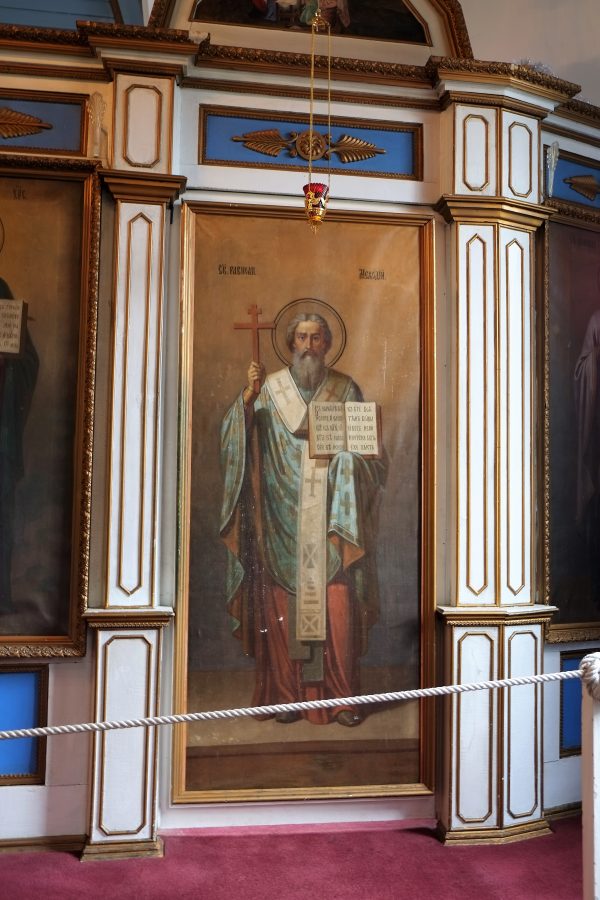Alphabets and Unity: Thoughts About Ukraine and Russia
Our home had few books when I was growing up. However, like many families in the 1950s and 1960s, we had a set of the World Book Encyclopedia. A quick Internet search tells me that this encyclopedia is still published today. My two favorite features in our black and white World Books were the section of full-color pictures of animals and the articles about the history of each letter of our alphabet.
One of the joys of having little children is reading alphabet books and pointing out letters to them and watching as they learn them one by one. I still have an interest in alphabets. I enjoy working with various fonts and seeing beautiful calligraphy and handwriting.
As I learned in our big set of World Books, the story of how an alphabet develops is often complicated. Alphabets change over time, and many have long histories.
The Cherokee man Sequoyah is the only known person in the history of the world singlehandedly to develop symbols for writing his own people’s language. The symbols that make up Cherokee writing aren’t technically an alphabet. The symbols of an alphabet represent individual sounds. However, Cherokee symbols represent syllables. Therefore, Sequoyah’s symbols are called a syllabary instead of an alphabet. The Cherokee Nation officially adopted Sequoyah’s alphabet in 1825, and the nation’s literacy rate increased dramatically in a very short time. Cherokee leaders were publishing a newspaper, the Cherokee Phoenix, by 1828. Missionaries soon assisted the Cherokee Nation in publishing the Bible, hymn books, and tracts in Cherokee. By the time Sequoyah died in 1843, over four million pages had been printed in the Cherokee language.
The Ukrainian and Russian languages both use forms of the Cyrillic alphabet. Ukrainians and Russians are part of the larger people group known as the Slavs. In the 800s, Moravia was a kingdom of Slavic people. It was located in what is now the Czech Republic. About 862 Prince Rastislav of Moravia sent a request to Michael III, who was serving as the emperor of the Roman Empire. The empire was based in Constantinople (which is now Istanbul). Prince Rastislav asked Michael III for help in teaching his people about Christ and what following Him means.
Michael III sent Methodius and Cyril to Moravia. The two were brothers (Cyril was 11 years younger) from Thessalonica in Macedonia. They had grown up speaking Greek and learning Greek customs. Because Slavs also lived in the area, Methodius and Cyril were familiar with the Slavic (also called Slavonic) language. Both Methodius and Cyril had dedicated their lives to serving God. Methodius was the abbot of a monastery. Cyril was a professor of philosophy at a school in Constantinople.
Before traveling to Moravia, Methodius and Cyril began to work on an alphabet for the Slavonic language. At the time, Slavonic was only a spoken language. These missionary brothers wanted to provide Scripture, a written liturgy, and other written materials for the Moravians. The alphabet they worked on is called Glagolitic.
The work that Methodius and Cyril did to produce a written language for Slavonic speakers helped to spread Orthodox Christianity among the Slavic people in Eastern Europe. They have become known as the Apostles to the Slavs. Orthodox Christians consider both of them to be saints. Some of those whom Methodius and Cyril taught later developed the Cyrillic alphabet, which is named for Cyril. Eastern Europe is home to many monuments to these “Apostles to the Slavs.” They are even honored in America, as is evidenced in the photo below.

The Ukrainian language, the Russian language, and the languages of many other people groups in Eastern Europe continue to use a form of the Cyrillic alphabet. Today 85% of Ukrainians profess to be adherents of the Ukrainian Orthodox Church.
When Ray and I went to Alaska in 2014, we visited Saint Nicholas Russian Orthodox Church in Juneau. Members of the local Tlingit Nation requested the construction of the church. Funds for building it came from Russia. Members of the Tlingit Nation and Serbian miners used local timber to construct the church in 1893-1894. Note that Serbia is in Eastern Europe. Serbians today use both the Cyrillic and the Latin alphabets.

The Russian Mission Society furnished and decorated the church’s interior. In most Orthodox Churches, an icon wall, called an iconostasis, separates the nave from the altar. In the photo below, the nave is in the foreground. You can see a large portion of the iconostasis at the back of the nave and a portion of the altar beyond the arch.

The iconostasis includes six large icons. One represents Cyril. Notice the writing in his hand.

Another represents Methodius.

How tragic that two groups of people who owe so much of their heritage to Methodius and Cyril are embroiled in a such a tragic conflict today. One of the most important lessons mamas and daddies need to teach their children is how to get along and be at peace with others. For this Jesus prayed on the night that His chosen disciple Judas betrayed Him.
Sanctify them in the truth; Your word is truth.
Just as You sent Me into the world,
I also sent them into the world.
And for their sakes I sanctify Myself,
so that they themselves also may be sanctified in truth.
I am not asking on behalf of these alone,
but also for those who believe in Me through their word,
that they may all be one;
just as You, Father, are in Me and I in You,
that they also may be in Us,
so that the world may believe that You sent Me.
John 17:13-21

